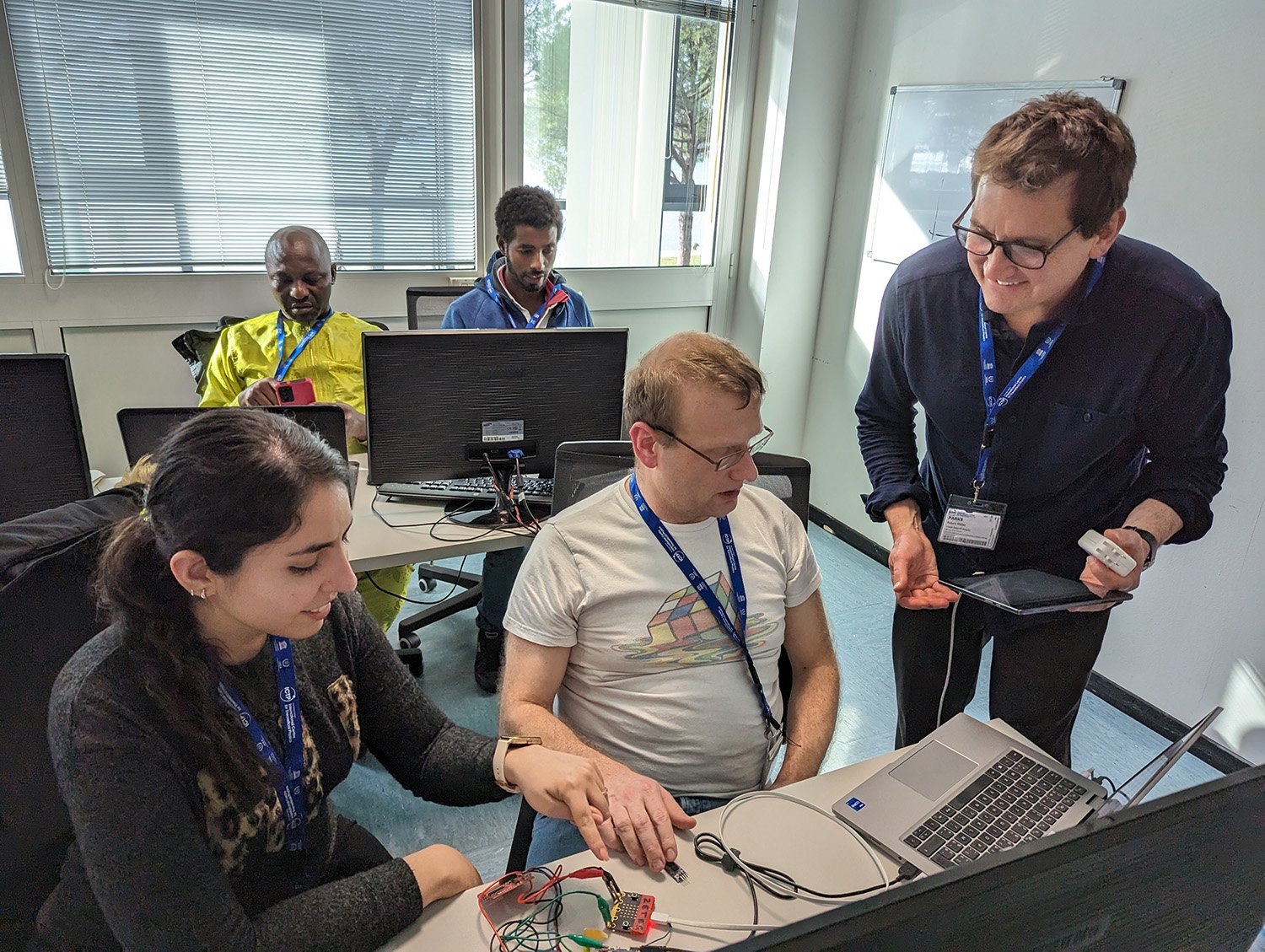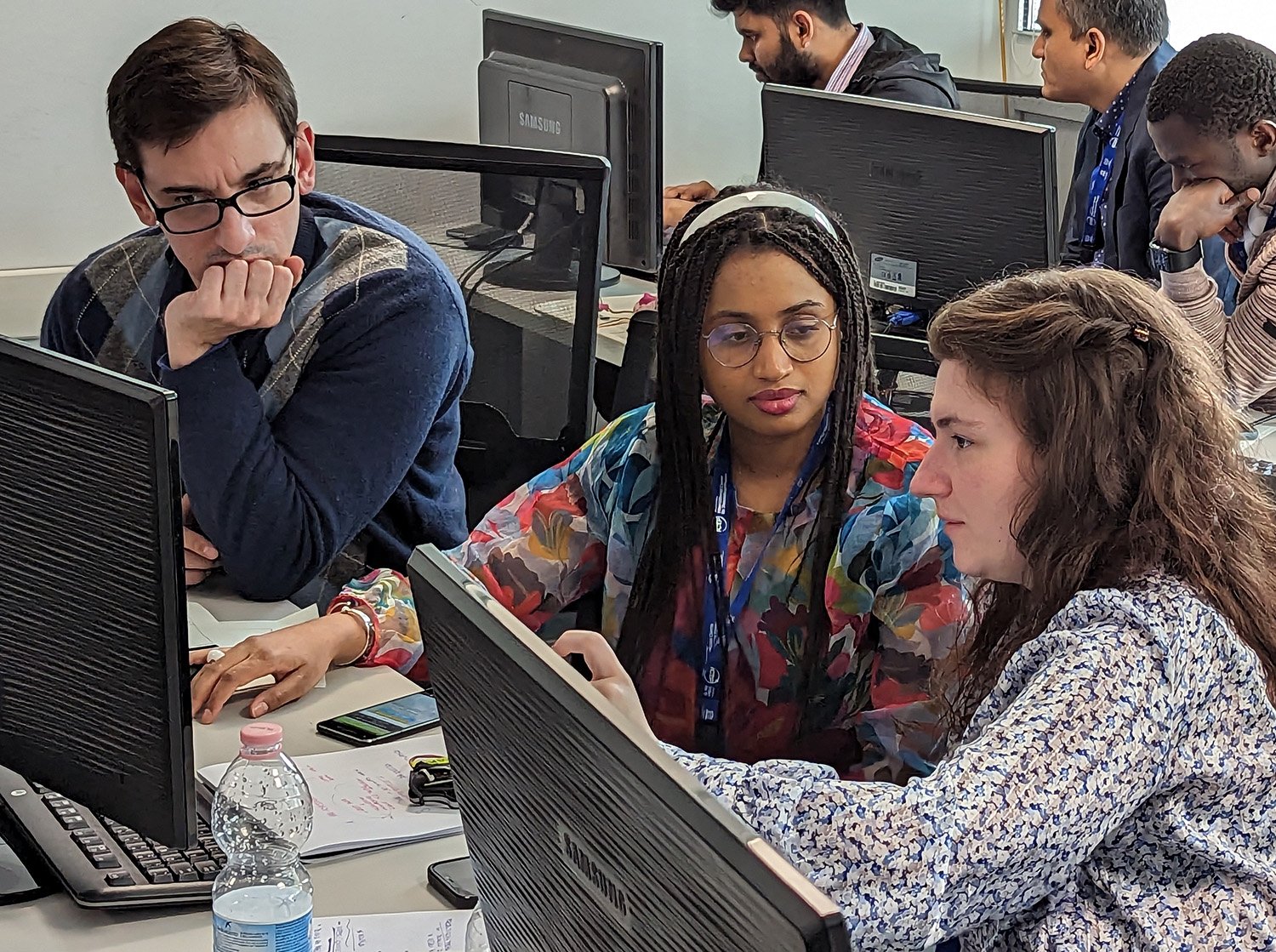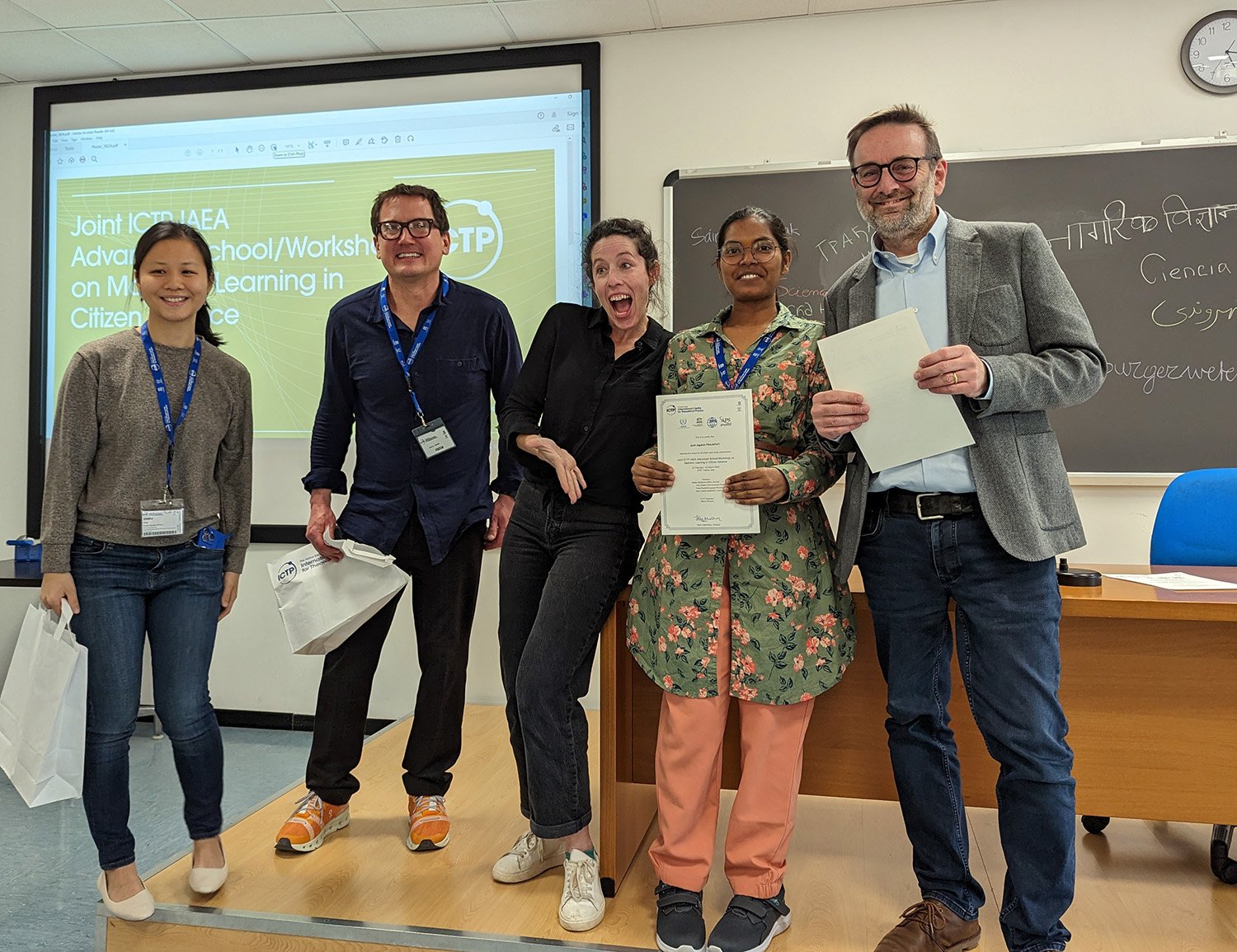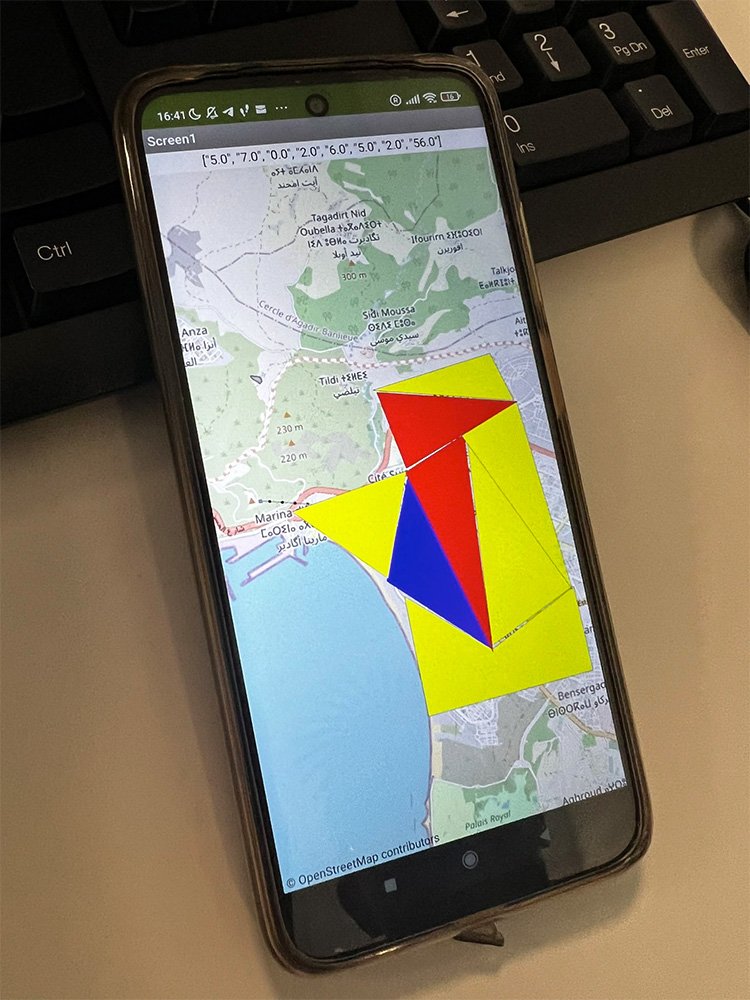App Inventor Leads Citizen Science Workshop in Trieste, Italy
Robert Parks is a curriculum developer, writer, and designer for the App Inventor team. From February 27 to March 4, 2023, he joined App Inventor education specialist Anqi (Angie) Zhou to lead a week-long workshop at the Joint ICTP-IAEA Advanced School/Workshop on Machine Learning in Citizen Science. The workshop brought nineteen scientists from around the world to the International Centre for Theoretical Physics in Trieste, Italy.
App Inventor education specialist Angie Zhou (bottom left) and Robert Parks (far right) instruct students at the Joint ICTP-IAEA Workshop on Machine Learning in Citizen Science.
Citizen science is about inviting everyday people to contribute meaningful data to real scientific projects. It has grown from a talking point ten years ago to a fast-growing field today, with large citizen science organizations on every continent. Every year, the International Center for Theoretical Physics hosts a workshop for emerging leaders in the field of citizen science. The workshop organizers figured that participants could benefit from learning fast app creation to accelerate their data collection, storage, and visualization. That’s how my colleague Angie Zhou and I wound up teaching MIT App Inventor to nineteen scientists in Trieste, Italy.
When Angie and I arrived at a sleepy seaside village about ten kilometers from Trieste, we were about as prepared as we could be. We knew we would be teaching app development for over two hours a day to young scientists leading citizen science projects. But what would they want to know? How would App Inventor fit in with citizen science? What would it be like working with my colleague in-person for the first time, after interacting exclusively over Zoom for two years?
Workshop participants write “Citizen Science” in their primary languages on a blackboard.
My mind was set to ease on the first day, when I discovered that the participants came prepared with clear goals for the workshop. A researcher from Belgium was leading a 15,000-person volunteer project to identify meteors from radio images. A scientist from Ghana was helping people avoid radon gas buildup in their homes. A young university teacher from Ethiopia was building a server system to hold citizen science data. It turned out that many of them had been looking for ways to quickly spin up phone apps for their projects.
“An app can quickly analyze, categorize, and visualize existing data to show the real state of the environment,” said Marine Voskanyan, a data analyst and cartographer from Armenia. She wanted an app that could display environmental health on a regional map. “Apps make independent data publicly available. Using apps could even contribute to better decision-making for communities.”
“Apps make independent data publicly available. Using apps could even contribute to better decision-making for communities.”
Enter team App Inventor. We took the scientists from day one—making an app that showed a cat!—to far more sophisticated capabilities. When students asked for real-world examples of using machine learning in an app, Angie guided them through an image classification tutorial. When they wanted to know how to upload and visualize real-time datasets, I introduced them to our new Google Sheets tutorial. When they were interested in connecting their apps to sensors, we demonstrated how to collect and upload data from IoT devices.
Suddenly students were building apps to identify plant species from images, detect meteors from 2D graphs, and upload sensor data from volunteers. “After working on App Inventor, I realized I could create an app so easily!” said Jyoti Prajapati of the Indian Statistical Institute. She wants to recruit everyday people to track hotspots of invasive plants in her country. “I’m pretty happy with my prototype. Once I start giving it more time, I will definitely make one for our work.”
Robert Parks and Angie Zhou take a break to explore Trieste’s sights.
Seeing that the students were ready for their final projects, Angie and I took some time off to explore Trieste. It was the perfect activity for two co-workers navigating the strangeness of distant collaboration—you know this person well, but you never actually met in person. We spent the morning exploring Roman ruins and checking out cafes.
In the last hour of the workshop, we were impressed that all the students had working prototypes for their citizen projects. It was a great start. Now back in our respective countries, Angie and I are both excited to hear which of the groups will finalize and distribute their apps to volunteers. “Creating the international network is a strong starting point for project development,” Voskanyan said. “Involving app design, A.I., and machine learning is the future of citizen science.”



Read Robert Parks’ interview with workshop participants Marine Voskanyan and Jyoti Prajapati to learn about their perspectives on the future of citizen science.





